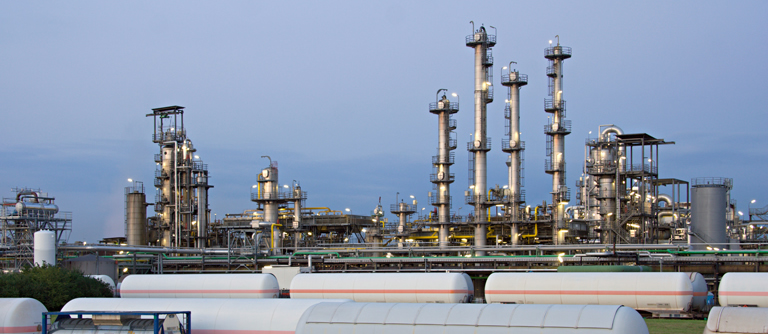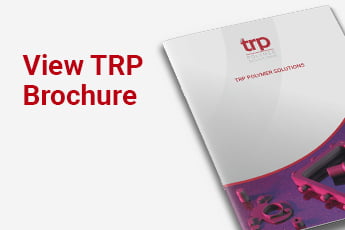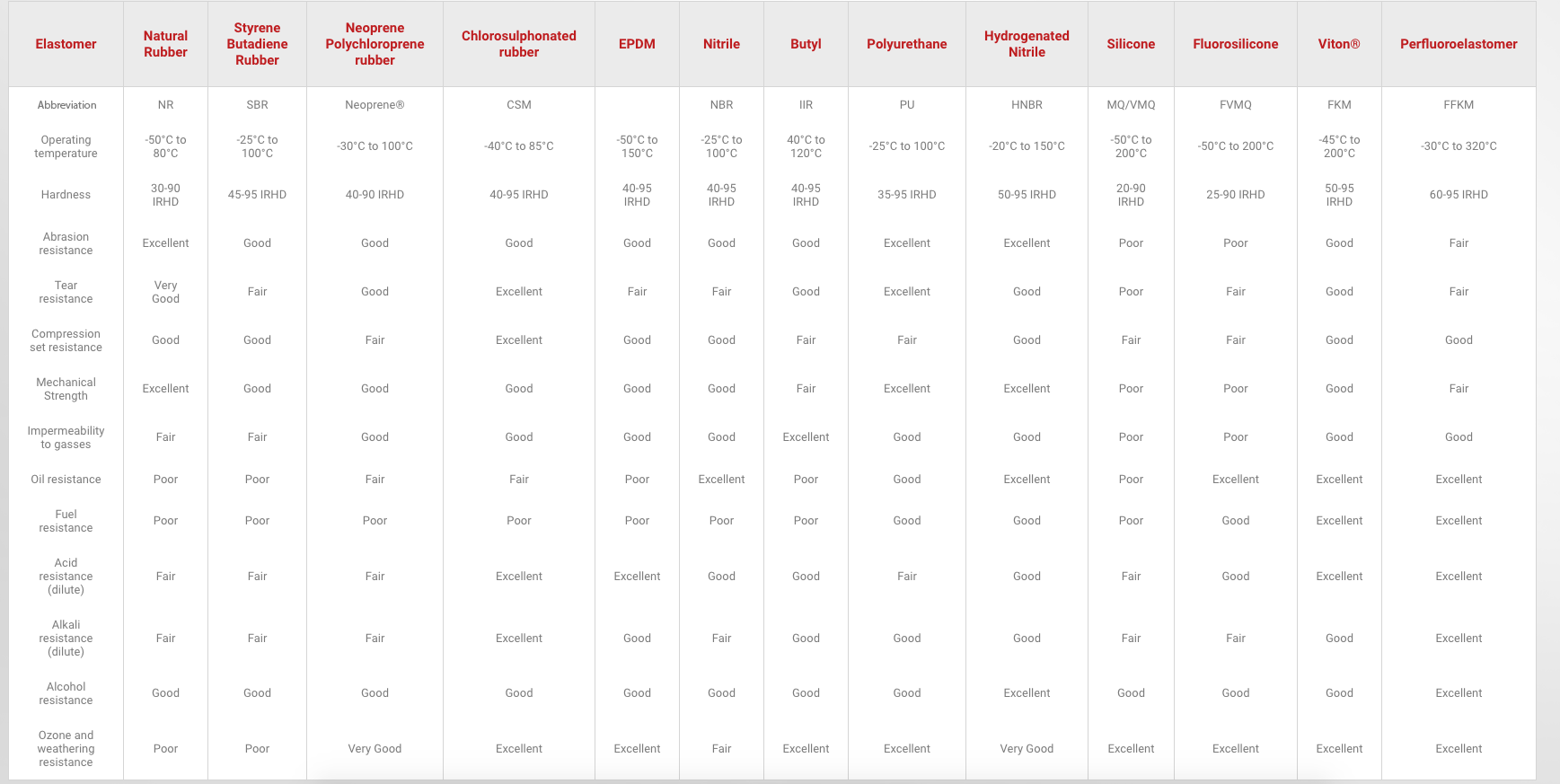What to consider when choosing a polymer material
When choosing your polymer material, it is vital that you consider all factors to ensure that you have the correct material to suit the needs of your specific application. At TRP, we want to provide our customers with all the guidance they need when choosing polymer materials, hence why we have put together this handy polymer material selection guide.

TRP’s Rubber Polymer Material Selection Guide
When choosing your polymer material, you must consider various factors, including:
• Hardness
• Tensile strength
• Elongation at break
• Compression set
• Specific colours
• What environment your polymer material will be exposed to
Polymer Material Selection Guide
Still unsure about how to choose your polymer materials? Below we will show you some examples of the polymer materials we have at TRP and the various factors surrounding them.
Butyl
If you are looking for a polymer material that is ideal for tyre inner tubes and bladders, Butyl is the perfect choice. With low gas permeation and excellent resistance to water, acids and bases, this material is suited to such applications.
Chlorosuphonated Rubber
Our chlorosolphonated rubber has an operating temperature of -40°C to + 85°C, making it a strong material to be used for environments where the polymer might be exposed to extreme weather conditions and flames. This material can also tolerate oils and acids, on top of having a good abrasion resistance.
Hydrogenated Nitrile
This polymer material is often used for O-rings that are faced with environments involving oil and gas. Its hardness range is 50 to 95 IRHD and it can operate in temperatures between -25°C and 150°C.
Extended Polymer Material Selection Guide
For further guidance on the range of polymer materials available at TRP Polymer Solutions, please visit our rubber polymer material selection guide. You can also fill out an enquiry form, or speak to one of our technical experts on 01432 359594.






